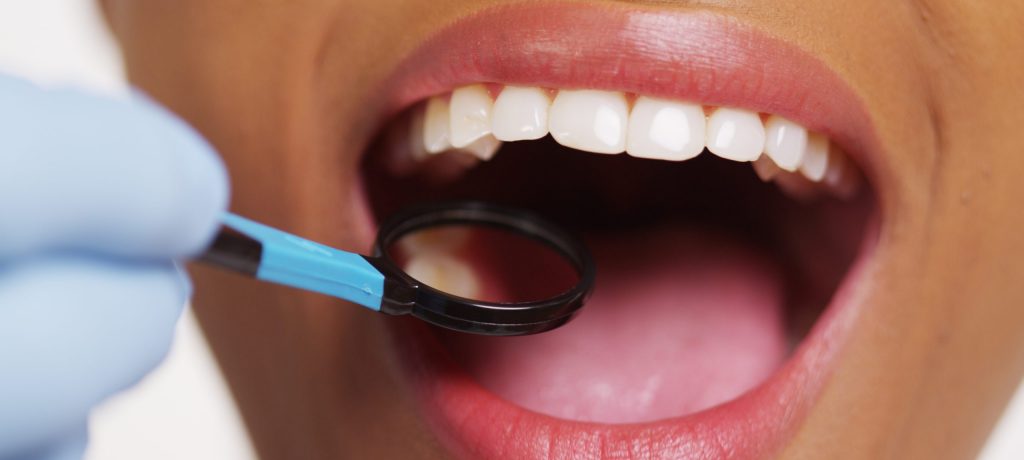Information Library
Start Reading

When we think about oral health, we often focus, with good reason, on preventing cavities or gum disease. However, some cosmetic concerns affect not only how our teeth look but also how we feel about them—an important dimension of oral health.
One such concern is the presence of craze lines. At Penn Dental Medicine (PDM), we find these fine, vertical lines on the surface of teeth can cause patients to worry.
What are craze lines in teeth and what causes them? Are they symptoms of cracked teeth—or a warning sign of other problems? And what can dental professionals do to fix them?
 What Causes Craze Lines in Teeth?
What Causes Craze Lines in Teeth?The good news is craze lines aren’t a dental emergency. They are superficial, hairline cracks in the outer layer of adults’ tooth enamel.
Craze lines don’t usually cause pain, but tooth sensitivity can sometimes be a symptom of them. Even these shallow cracks in your enamel can expose the more sensitive dentin layer beneath, leading to discomfort when consuming hot or cold foods and beverages. If you experience a sharp, fleeting pain in your teeth when eating or drinking, it could be a sign of craze lines.
Even so, the lines in themselves pose no threat to oral health. They are a cosmetic issue—which is not to say they are unimportant, because they can cause affected patients to feel dissatisfied with their smile. If their visibility bothers you, cosmetic treatment options are available.
The bad news is craze lines may indicate more serious oral health conditions. Sometimes, the lines form due to normal wear and tear on the teeth over time. But in other cases, lines may result from:
 Craze Lines vs a Cracked Tooth—What’s the Difference?
Craze Lines vs a Cracked Tooth—What’s the Difference?Several distinct differences between craze lines and cracked teeth exist:
Practicing good oral hygiene, visiting your dentist regularly, and wearing a night guard if you grind your teeth at night can all help minimize your risk of developing craze lines.
Additionally, you can break habits that may cause the lines. As noted earlier, these habits include chewing on hard objects, using tobacco products, or grinding your teeth. Reducing or avoiding acidic foods and drinks in your diet can also help.
If craze lines are present on your teeth, a dentist should evaluate them. Although teeth craze lines don’t usually require treatment, you need an expert opinion to rule out more serious underlying conditions. The dentist may recommend cosmetic dentistry or address any underlying conditions the evaluation reveals.
 How To Fix Craze Lines in Teeth
How To Fix Craze Lines in TeethDental bonding is one common treatment option for craze lines. This procedure involves applying tooth-colored composite resin to the surface of the affected tooth, effectively covering the craze lines and enhancing your smile’s overall aesthetics.
Porcelain veneers are another popular treatment. Veneers are thin, custom-made shells bonded to the front surface of your teeth. They are a highly durable and stain-resistant solution.
In some cases, tooth-whitening treatments can help minimize the appearance of craze lines. Professional whitening procedures can lighten the color of your teeth, making lines less visible. However, if the lines are deep or extensive, whitening may not lead to significant improvement.
For individuals whose uneven bite causes the lines, orthodontic treatment may be necessary. By correcting the alignment of your teeth and bite, orthodontics can help alleviate the pressure and stress on your teeth.
If you’re concerned about craze lines, schedule your appointment now with PDM online or by calling 215-898-8965. One of our highly trained student dentists can evaluate and diagnose your condition under a faculty member’s supervision.
If you have craze lines, your student dentist may point you to some cosmetic options. If, on the other hand, you have a crack impacting the entire tooth, your student dentist will determine if the tooth can be saved and which repair option would be best.
No matter your dental needs, PDM provides top-quality, comprehensive, and affordable care. For more information about how PDM can help you achieve better oral health, download our free chart about what makes Penn Dental Medicine statistically unique.